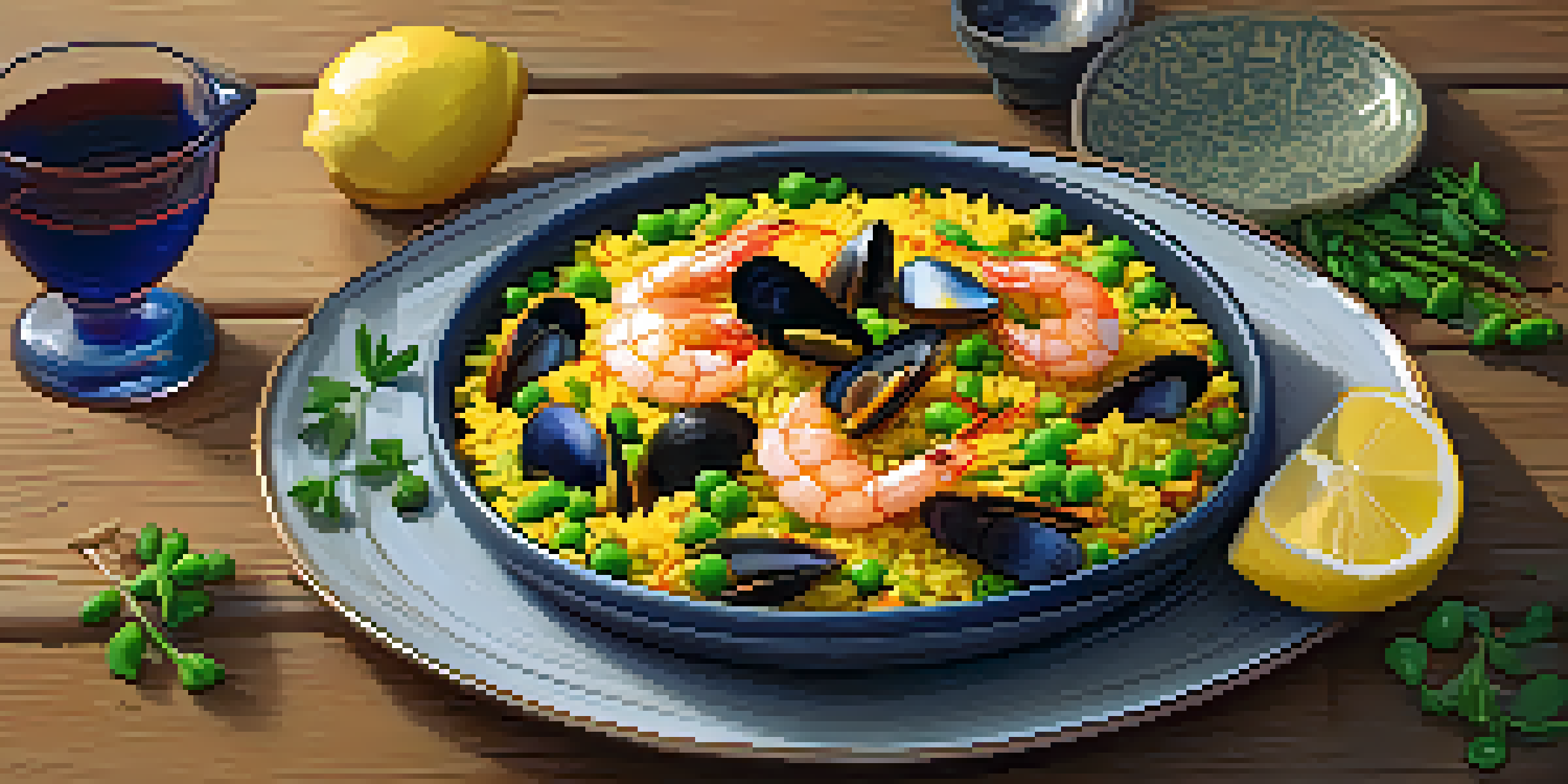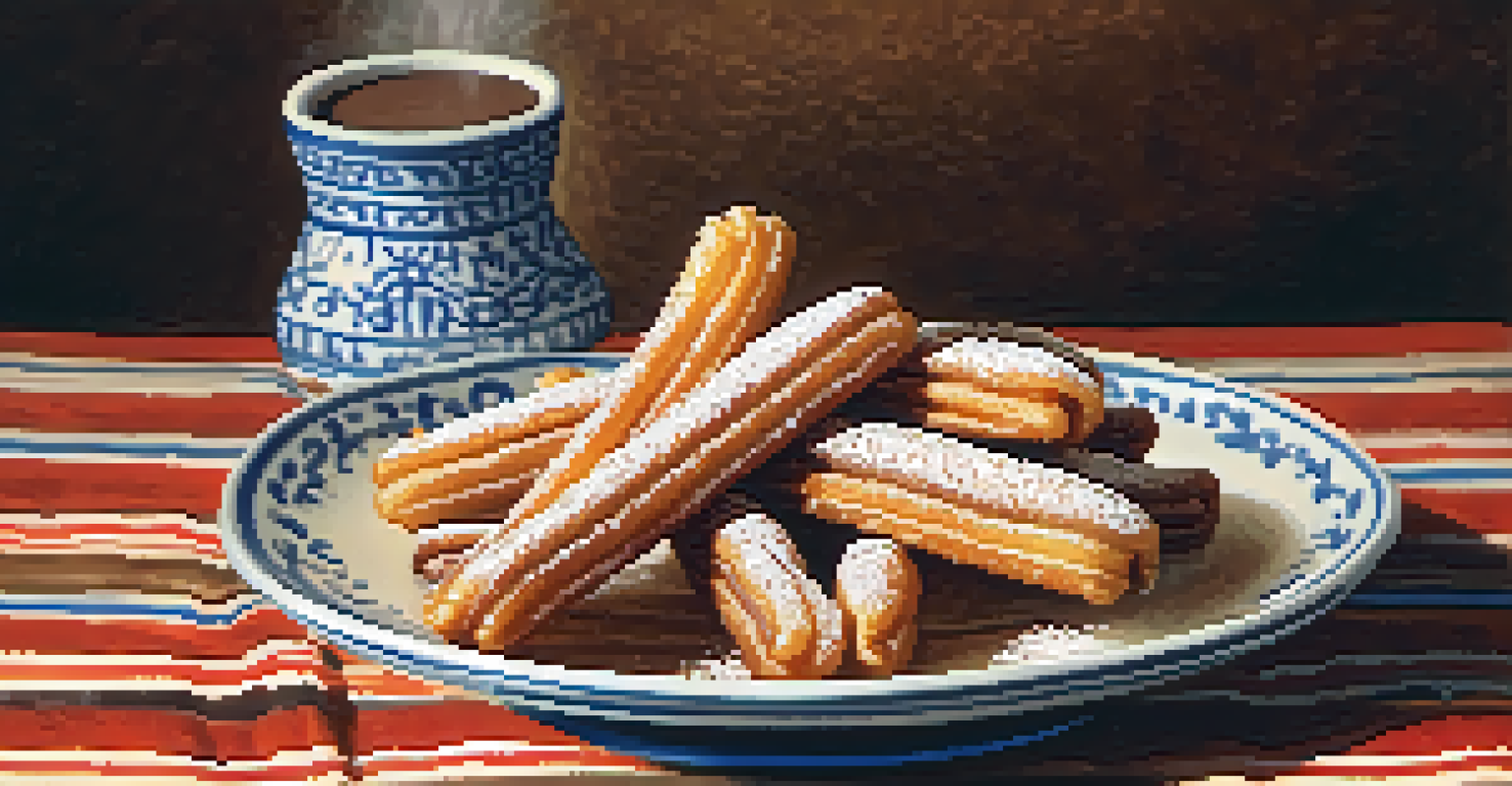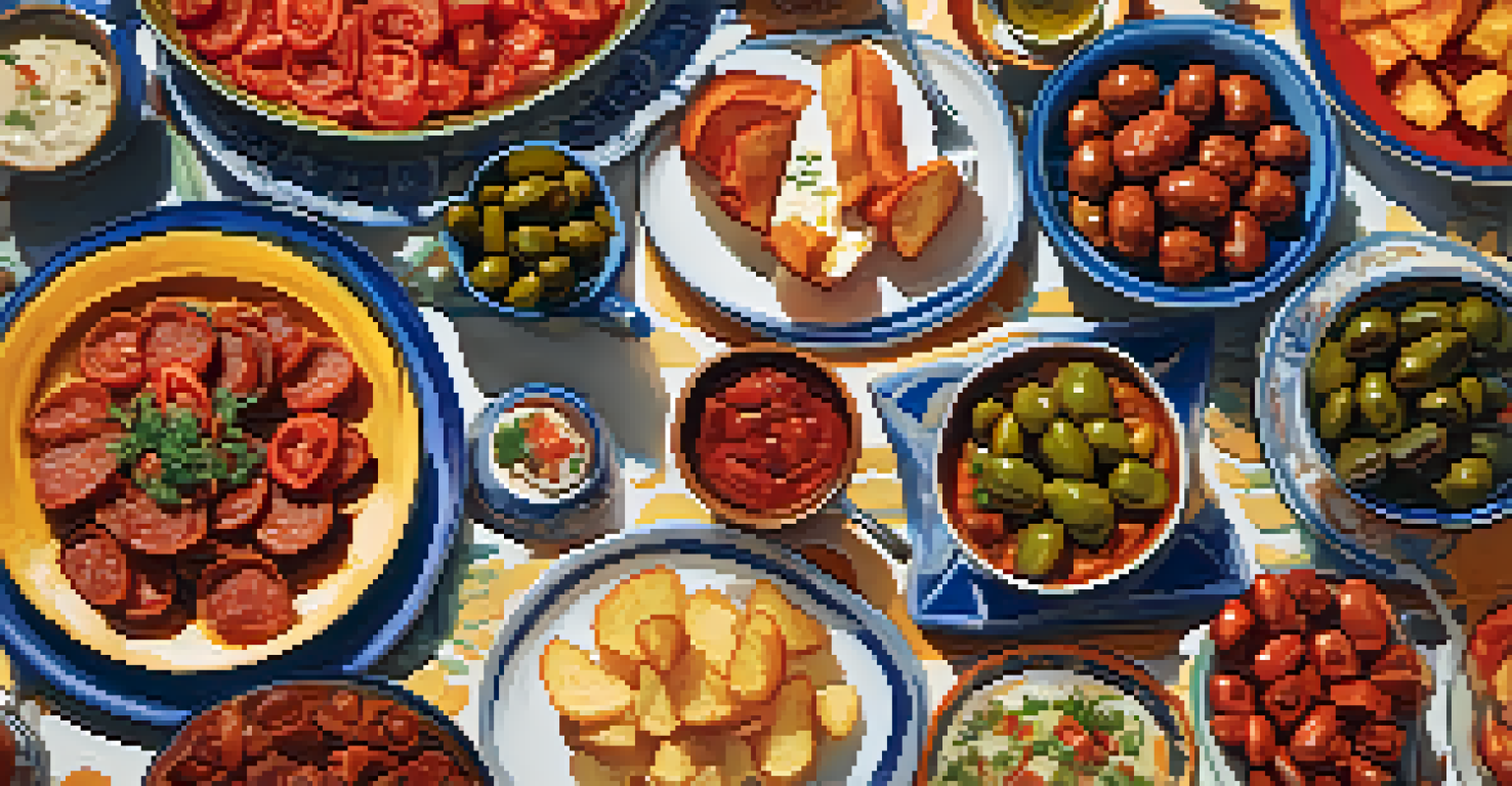Food Photography: Capture the Flavors of Spain's Cuisine

The Allure of Spanish Cuisine in Photography
Spanish cuisine is a vibrant tapestry of flavors, colors, and textures. From the rich reds of a traditional paella to the golden hues of churros, each dish tells a story. Capturing these elements in a photograph can make anyone’s mouth water, showcasing the cultural heritage behind the food.
Food photography is about capturing the essence of a dish, but it's also about telling a story.
The visual appeal of food is essential in enticing people to explore new cuisines. When you think of Spain, images of tapas, fresh seafood, and aromatic spices come to mind. Using photography to highlight these aspects allows us to appreciate the artistry of Spanish cooking and invites others to indulge.
Moreover, the way food is presented greatly influences its aesthetic. Using props like colorful plates or rustic tablecloths can enhance the overall image. In food photography, a little creativity goes a long way in making Spanish dishes irresistibly photogenic.
Essential Gear for Capturing Food Photos
To get started with food photography, having the right equipment is crucial. While professional cameras can be beneficial, many stunning images come from smartphones. The key is understanding how to utilize the tools you have, whether it’s adjusting lighting or focusing on the dish’s details.

A tripod can make a significant difference, especially for low-light situations typical in restaurants or cozy kitchens. It stabilizes your camera, allowing for sharper images with longer exposure times. Additionally, using a reflector can help bounce light onto your dish, enhancing its features without harsh shadows.
Capturing Spanish Cuisine's Essence
Food photography beautifully showcases the vibrant flavors and cultural heritage of Spanish cuisine.
Don’t forget about lenses! A macro lens is excellent for capturing intricate details, while a wide-angle lens can showcase a whole table of tapas. Investing in good lenses can elevate your food photography, making each dish look even more delectable.
Lighting Techniques to Enhance Food Photography
Lighting is one of the most critical elements in food photography. Natural light is often the best choice, as it brings out the colors and textures of the food beautifully. Positioning your dish near a window can create soft, flattering light that enhances the visual appeal.
The best part of food photography is that it allows you to share not just the meal, but the experience of enjoying it.
If natural light isn’t available, consider using soft artificial light sources. Avoid harsh overhead lighting, as it can create unflattering shadows. Instead, opt for light diffusers to create a more even and inviting glow around your dish.
Experimenting with different lighting angles can also yield stunning results. Side lighting can create depth and highlight textures, while backlighting can enhance the freshness of ingredients. Understanding how to manipulate light can transform a simple dish into a visual masterpiece.
Composition Techniques for Captivating Images
Composition plays a vital role in food photography, guiding the viewer’s eye to the focal point. The rule of thirds is a helpful guideline; by placing your dish off-center, you create a more dynamic image. This technique can draw attention to the food while also incorporating surrounding elements.
Incorporating negative space can also enhance your composition. Leaving some areas of the frame empty can create a sense of balance and focus the viewer's attention on the main dish. It’s a simple yet effective way to emphasize the beauty of Spanish cuisine.
Essential Gear for Great Photos
Having the right equipment, like a tripod and good lenses, is crucial for capturing stunning food images.
Don’t be afraid to play with different angles! Overhead shots work well for flat dishes like paella, while eye-level shots can be great for showcasing layered items like sandwiches or desserts. Finding the right angle can dramatically change the story your photograph tells.
Styling Spanish Dishes for the Camera
Food styling is an art form that can elevate your photography to the next level. When photographing Spanish cuisine, think about how to arrange ingredients in a way that looks appealing. For instance, a sprinkle of fresh herbs can add a pop of color and freshness to a dish.
Consider using vibrant props that reflect Spanish culture, like traditional ceramic plates or colorful napkins. These elements can add context and warmth to your food photos, making them more inviting. A well-styled dish not only looks good but also tells a story about its origins.
Lastly, don’t forget to keep it natural! While styling is important, authenticity matters too. Showcase the dish as it would be served, embracing imperfections that make it unique. Real food has character, and capturing that essence can resonate more with your audience.
Editing Tips to Polish Your Food Photos
Editing is the finishing touch that can make your food photography truly shine. Basic adjustments, like brightness and contrast, can enhance the overall image without losing its authenticity. Using editing software or apps can help you refine your photos and bring out the best in your Spanish dishes.
However, be mindful not to over-edit! You want to maintain the real colors and textures that make the dish special. A few tweaks here and there can enhance your image, but remember that less is often more in food photography.
Lighting and Composition Matter
Mastering lighting techniques and composition can transform ordinary dishes into captivating visual stories.
Consider using presets or filters specifically designed for food photography. These can help maintain a consistent style across your images, making your portfolio cohesive. Whether you prefer a warm, rustic look or a fresh, vibrant feel, editing can help communicate your unique vision.
Sharing Your Spanish Food Photography with the World
Once you’ve captured and edited your stunning food photography, it’s time to share it with the world! Social media platforms like Instagram are perfect for showcasing culinary creations, allowing you to connect with food lovers everywhere. Use relevant hashtags to reach a broader audience interested in Spanish cuisine.
Creating a food blog or website can also be an excellent way to share your passion. You can write about your experiences, share recipes, and showcase your photographs. This not only helps you build a community but also allows you to express your love for Spanish food.

Engaging with your audience through comments and feedback can foster a sense of community. Ask for their thoughts or invite them to share their own experiences with Spanish dishes. This interaction can enrich your photography journey and inspire others to appreciate the beauty of food.